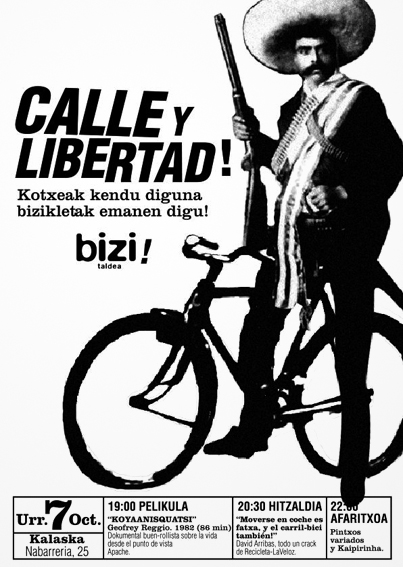Why Specialized?
May. 1st, 2025 03:15 pmFor whatever reasons, a lot of people dislike the major bicycle manufacturers. I’ve ridden Specialized bikes for two decades now, and one question I haven’t talked about is: “Why Specialized”?
So I wrote this big long essay following my progression as a cyclist over time and describing all my bikes and how much I used them and… never got around to answering the question.
So instead of a multi-volume encyclopedic life history, how about I just answer the goddamned question?
Episode One: The Plastic Bullet
 The Plastic Bullet at the 2007 PMC. |
I bought my first Specialized bike in 2005. At that point, I’d already ridden five Pan-Mass Challenge charity rides, and was a regular at Bobby Mac’s long group rides out of Quad Cycles. I’d transitioned into a committed endurance cyclist, after having started out as a short-distance bike commuter.
But that transition wasn’t something that suited my straight-bar hybrid commuter bike. I needed something faster, lighter, and more aerodynamic; something as zippy as the typical racing road bike but more comfortable, tailored for epically long days in the saddle. But no one sold such a thing!
Enter Specialized, who had just designed a carbon fiber bike that was fast enough for pro racing, but more reliable and forgiving in the cobblestone-strewn European spring classics races. They gave it a longer wheelbase, more front fork rake, and elastomer inserts to produce a smoother ride. In their new Specialized Roubaix, they had created the first bike in a whole new category: performance endurance bikes.
When I wanted a bike that combined top performance with all-day comfort, Specialized was the only company that could meet my needs. And the Plastic Bullet delivered on its “performance endurance” reputation, accompanying me through 7 PMCs, 30 imperial centuries, and 35,000 kilometers.
Episode Two: R2-Di2
 R2-Di2 at Boston’s Charles River Esplanade |
Fast-forward seven years, and it was time to replace my trusty steed. Other manufacturers had introduced their endurance bikes, and I had grown into a discriminating roadie, so I took the time to test-ride eight different bikes.
However, nothing held a candle to the fourth-generation Roubaix, which was lighter, stiffer, and came with Shimano’s Di2 electronic shifting. Specialized was still the undisputed king of the performance endurance category.
Besides being my top pick, Specialized offered me a 20% manufacturer’s discount on the new Roubaix. By offering me an amazing bike at an amazing price, they ensured I’d be a loyal Specialized rider for the next chapter in my cycling career.
And R2-Di2 delivered in spades. Together over 10 years, we ticked off 45,000 kilometers, 59 imperial centuries, and another 6 PMC rides… PLUS 22,000 virtual kilometers on the indoor trainer, along with 13 Zwift centuries!
Episode Three: Pæthos
 Pæthos at Austin’s Redbud Isle |
I was already delighted with Specialized, but when R2 finally came down with a fatal crack in the frame, they blew me away.
First, they have a discounted replacement plan for frames that break after their 2-year warranty expires. That’s pretty cool to begin with.
Unfortunately, that coverage stops after five years, and R2 was a decade old. But after they inspected my bike, they not only included me in the program, but offered me the 35% discount that you’d only get for a bike that was less than three years old! Imagine trading in a 10 year old bike and getting $2,500 toward a brand new model. Wow!
My only hesitation was that over that decade, the Roubaix had forgotten its “performance” heritage and evolved into a gimmicky, cushy family cruiser that no longer suited me. When I asked if I could apply the replacement discount to a different model… No problem! So they let me order an Æthos, their lightweight climbing race bike. Yay!
But there was a problem. This was toward the end of the Covid pandemic, when bike inventory had all been bought up, and the whole industry’s supply chain was in ruins. There was only one Æthos in my size left in the entire country, and it was in a bike shop in Denver, Colorado. But my incredibly responsive rep persuaded them to surrender it and ship it down to Austin for me.
So although I lost a very dear friend in my 2013 Roubaix, Specialized gave me an upgrade to an amazing, brand-new Æthos at an unbelievable price. I hope to put my new Pæthos through the wringer, too!
The Bottom Line
 |
So to finally answer the question…
I ride Specialized because their products have been excellent: well-designed, durable, and suited to my needs as a devoted endurance cyclist.
While I’ve come to expect petty greed from big corporations, Specialized has been shockingly generous with me, offering huge discounts well in excess of their corporate policies.
And beyond all that, they’ve been stunningly friendly and flexible, letting me apply my frame replacement discount to a different model, and then helping me track down and acquire the solitary bike in the country that fulfilled my needs.
Buying my first Specialized Roubaix road bike filled me with excitement and delight. That joy has stayed with me through three bike purchase cycles, over 100 imperial centuries, and more than 100,000 kilometers of riding. And Specialized’s bicycles and their treatment of me as a customer have been a significant part of the delight and enjoyment I’ve gotten throughout 20 years of cycling. Thank you, and well done!
The only area where they’ve disappointed me is in not offering more paint schemes or a custom paint program. You’d think that after 50 years in business, they would have figured that out. How about it, Spesh?

